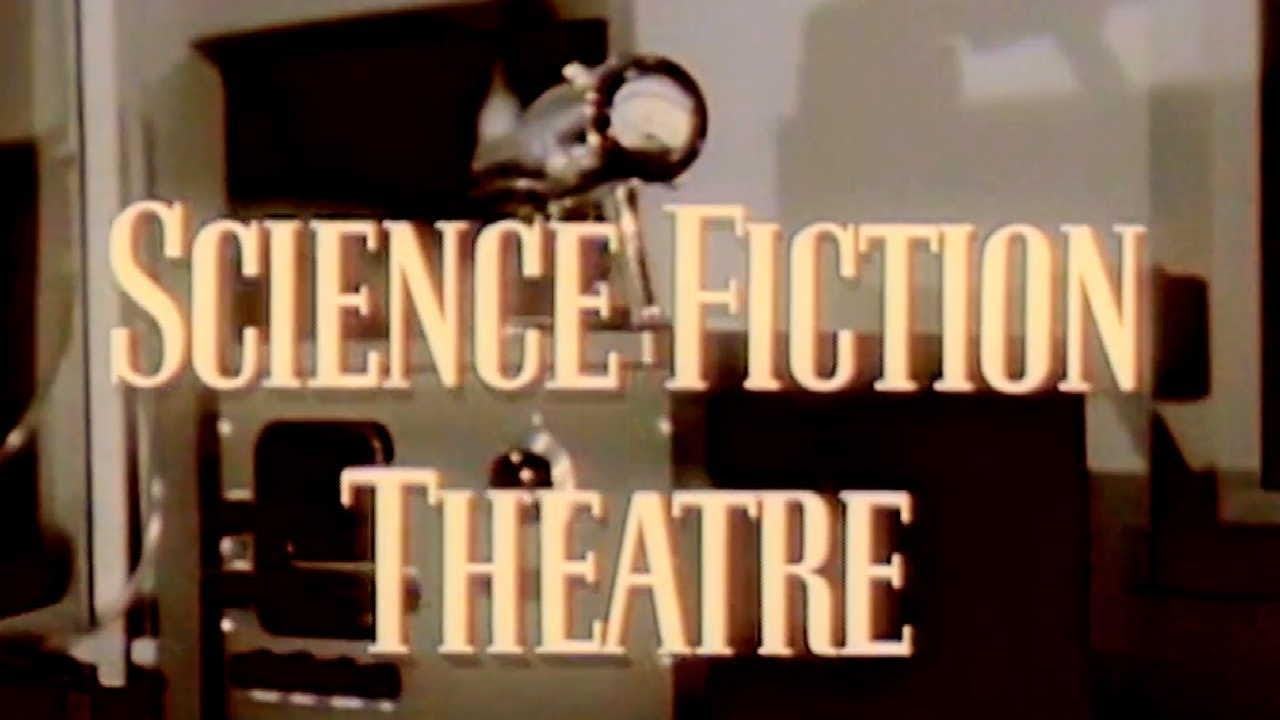
In 1955, Dr. McCoy from the Starship Enterprise was stationed in the Arctic, where he assisted a telepath on a terrestrial rescue mission. Well, almost. In the 1955 episode of Science Fiction Theatre called “Y-O-R-D,” actor DeForest Kelley, later famous for playing Bones on the original Star Trek, appeared in one episode of a sci-fi anthology series that is now, almost totally forgotten. “Y-O-R-D” was the second episode of Science Fiction Theatre filmed, and the fourth aired. But the first episode, “Beyond” — all about a test pilot who spots a UFO — debuted on April 9, 1955.
Seventy years later, Science Fiction Theatre is largely remembered as a punchline from Back to the Future; George McFly (Crispin Glover) tells Marty (Michael J. Fox) that he can’t attend a dance (on November 12, 1955) because it’s the same night that a new episode of Science Fiction Theatre airs. But was George McFly missing anything? Does Science Fiction Theatre hold up all these years later?

Science Fiction Theatre was an early sci-fi anthology TV series, and though it became well known, it wasn’t the first. Technically, it was predated by the CBS anthology series Out There and the ABC show Tales of Tomorrow, which both began airing in 1951. However, by 1953, neither of those series were on the air, while One Step Beyond and The Twilight Zone wouldn’t hit until 1959. And, unlike its predecessors, Science Fiction Theatre was syndicated, meaning it may have run at different times on different channels, depending on where you lived. This fact is interesting, simply because it was the syndication model that revived Star Trek in the 1970s and became one of the major ways for sci-fi series of all kinds (like The Next Generation and Babylon 5) to survive and thrive in the days before streaming.
Created by Ivan Tors and Maurice Ziv, Science Fiction Theatre’s first season was filmed in color, which was a rare choice for its time. Many retrospectives on the series will point out that the stories often were based on articles from Scientific American and that the opening monologue — from announcer Truman Bradley — emphasized the hypothetical real-life possibilities of these stories.
However, when you go back and watch the show, the vague assertion that the show was somehow hard SF evaporates pretty quickly. Again, the first episode is a fairly generic story about a pilot who sees a UFO, while that DeForest Kelley episode, “Y-O-R-D,” will give you strong Ghostbusters vibes at its start; the moments in which actress Judith Ames is perfecting her telepathy in the parapsychology department of a university will make you wonder when Dr. Venkman is going to arrive. And that episode George McFly would have missed on November 12, 1955? That one was called “The Hastings Secret,” all about mutant termites who eat minerals instead of wood.
So, no, Science Fiction Theatre’s value wasn’t its scientific fidelity. Instead, what made the show unique and groundbreaking was that, unlike older sci-fi serials like Flash Gordon, this show took the genre of science fiction more seriously and attempted to present sci-fi stories as realistically and casually as possible. Perhaps the best example of this is the second episode ever aired, called “Time is Just a Place.” Bradley’s introduction reminded audiences about the existence of rudimentary robots, as well as the existence of different time zones for airplanes, but this intro only vaguely applied to the actual plot of the story. In this episode, a suburban couple become suspicious of their neighbors, partly because they possess weird inventions like a “sonic broom,” but also because these neighbors seem ignorant of how cars work.
The big reveal is that this other couple is from the future, hiding out in the past, trying to conceal the fact that they are time travelers. These people have X-ray flashlights, not to mention instant telepathic communication. Told from the perspective of the suspicious neighbors, the action unfolds not unlike one of the more domestic episodes of Black Mirror. The acting isn’t horrible either, which makes many of the better episodes of this show decently rewatchable 70 years later.
The only real problem with watching Science Fiction Theatre today is its omnipresent obsession with making the technology of each sci-fi story explicable in a 1950s context. In this way, Science Fiction Theatre attacked the number one problem a lot of sci-fi TV will always face: even when trying to be allegorical, the speculative tech will eventually seem anachronistic or unreal.
In 70 more years, Science Fiction Theatre will likely be totally forgotten. But will its heirs, Black Mirror and Severance, still be discussed and analyzed? It’s hard to think of the future like this, but watching Science Fiction Theatre today will make any serious sci-fi fan wonder if right now, in 2025, we’re living in some version of the 1950s that other people will look back on and laugh.







